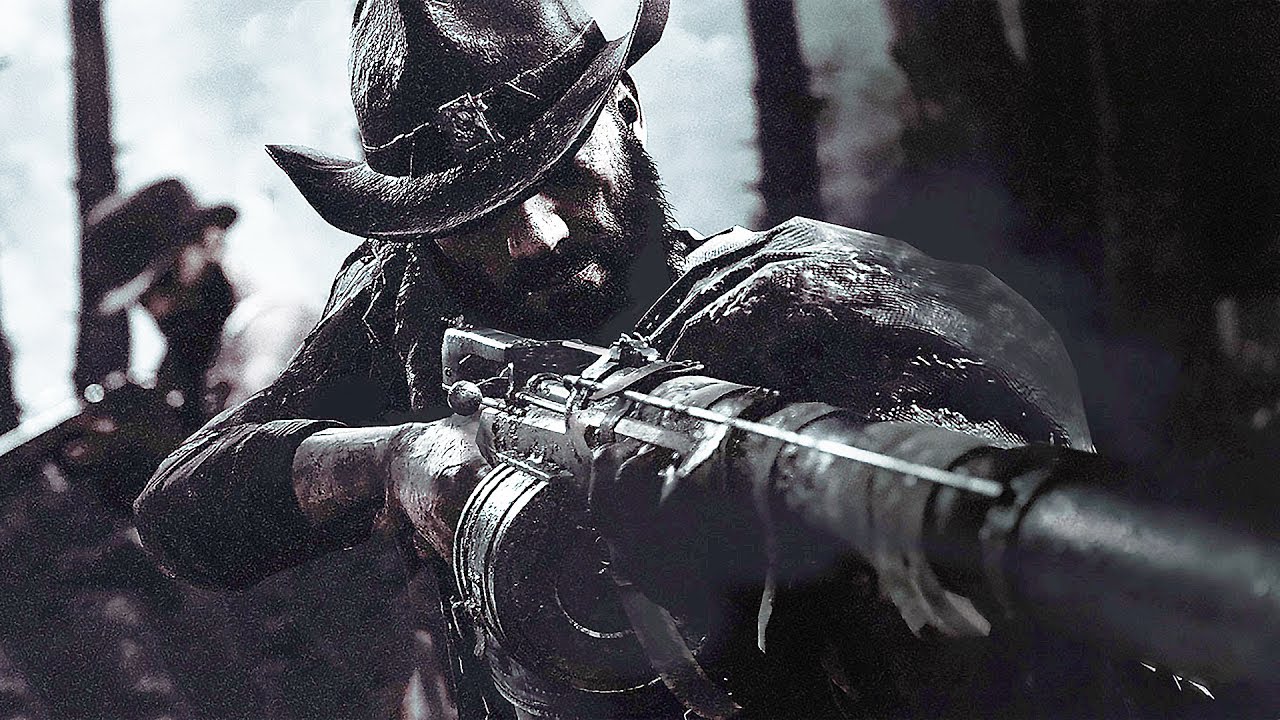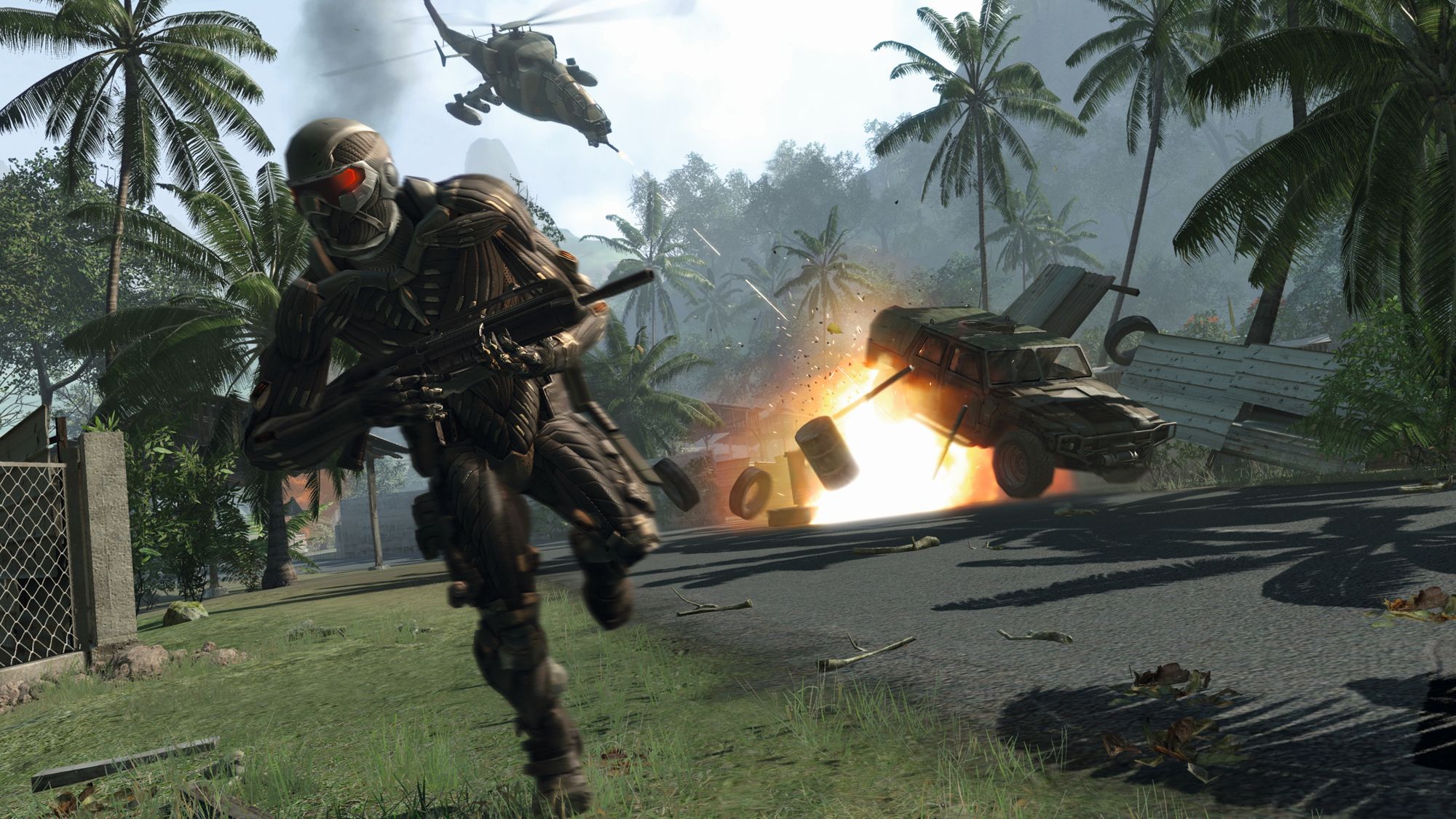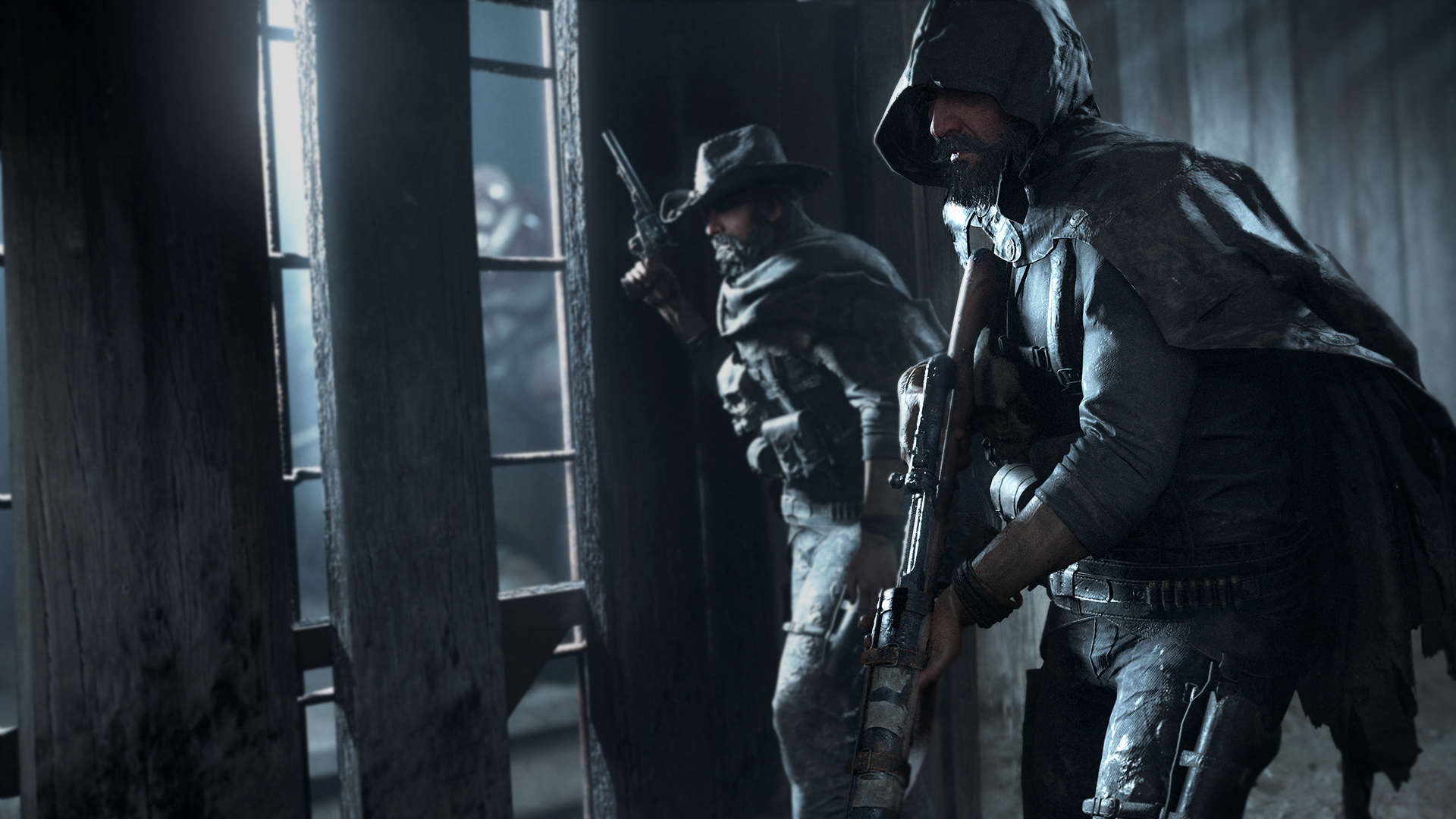Tracing the evolution of Crytek, from Far Cry to Hunt: Showdown
How Crytek's latest game harks back to its past.

It took Crytek’s latest game, Hunt: Showdown, to teach me how to play its very first. The studio’s 2004 debut, Far Cry, had seemed like a devolved stealth game—a stunted halfway point between Doom and Dishonored. But there’s a satisfying throughline from where the company began to where it is now.
In Hunt: Showdown, a particularly brutal twist on battle royale, noise is deadly. Gunshots telegraph your position not just to the zombie mobs that roam the map, but to other players hungry for the same bounty you’re after. Yet sometimes you have to open fire to survive the toothy advances of a hellhound.
Far Cry functions according to the same principles. This was a time before silent melee takedowns—when your machete was a clumsy last resort, and silenced weapons were rare. Rather than attempt to ghost your way across the tropical rainforest, it’s better to pounce on patrols quickly and decisively—then dive into the cover of a nearby cave before reinforcements arrive.
Bubble and squeal

By its next game, Crytek had baked this phased play into its mechanics. Crysis was built around a muscular exosuit that made you look like an exhibit at Bodyworlds, but allowed you to switch between powers at will: super speed, extra strength and an invisibility cloak that required careful deployment to make best use of your limited battery. The studio had managed to codify its quiet-loud approach in level design, too: read the interviews it conducted with press about the Crysis games and you’ll see mention of ‘action bubbles’. These pockets of noise were designed to give you space to manoeuvre; if Crysis asked you to infiltrate a North Korean base, it encouraged you to take the long way round, swimming downriver and storming through the less-protected side that is reserved for deliveries.
It’s impossible to separate the design of Crytek’s early games from its tech. The great draw of Far Cry was its draw distance—it was born from a demo that Nvidia shipped as benchmarking software with its graphics cards. And for many years, Crytek games served the same purpose for PC gamers: if their machines ran Crysis at the highest settings, that was a point of pride. But even as the sheen of those games faded through the years, the environments created to show them off remained. The studio had blown open the FPS, offering new scope and freedom of approach. The mountains and oceans once drawn into the background of shooters were finally within reach, and the genre would never be the same.
Time to cry

You might imagine that a studio with DNA as distinct as this would protect it over generations of games, the way id Software has with Doom. But while Crytek had established CryEngine as technology to be reckoned with, it hadn’t produced a mainstream hit. The studio lost its nerve, following Call of Duty into more cramped, urban environments and scripted follow-the-leader sequences.
Far Cry and Crysis both have reputations for deteriorating returns—the former throwing up too many painfully hard corridor levels in its second half, and the latter not so much jumping the shark as splitting open a volcano full of aliens as it reached its finale.
Keep up to date with the most important stories and the best deals, as picked by the PC Gamer team.
For a while it looked as if Crytek itself might follow the same, sorry trajectory, failing to match its early promise as it reached maturation. Longtime CEO Cevat Yerli, whose first designed game had been an economics simulation, became a fervent fan of free-to-play. In 2014 and again in 2016, rumours circulated that Crytek hadn’t been paying staff at some of its studios, and it looked as if the company was about to be on the verge of collapse.
In the end, though, CryEngine helped save its creators. Amazon bought access to the renowned tech for use in its own Lumberyard toolset, in a deal that reportedly topped $50 million. And Crytek survived long enough to make its modern masterpiece.
Back in hats

You can find pre-echoes of Hunt: Showdown in other games Crytek has greenlit. Homefront: The Revolution was sold off midway through development, but its guerrilla fighting style—in which you launched hit-and-run assaults against an occupying force, before scarpering—made it clear the developer was experimenting with action bubbles again. In Hunt, escape becomes more important than the battle itself: you play with persistent characters, and so it’s a valid tactic to pull out of a bounty hunt that gets too dicey and ‘live to die another day’, as the game puts it.
The way Crytek passes information to players has changed, however. The studio practically invented enemy marking, dotting Far Cry’s postcard paradise with towers you could climb to survey enemy positions with your binoculars. The process only became more elaborate in the Crysis games, where designers worked according to the mantra of veni, vidi, vici: I came, I saw, I conquered. To succeed against overwhelming odds, players would first have to observe and plan before heading into action.
You can find pre-echoes of Hunt: Showdown in other games Crytek has greenlit.
Yet Crysis also offered an intriguing alternative: Delta mode, in which the enemies spoke exclusively in Korean, robbing you of crucial information about what they’d seen and where they were going. With Hunt, that deprival of information has come to the fore. Thick forest and night missions mean line of sight is inconsistent at best. There’s no minimap, nor a tally of the players remaining in the game. Even the enemies you spot vanish into vast barns full of abandoned farming equipment, leaving you none the wiser about their position.
Yet the game is still to gather information—it’s simply the sense that’s changed. Hunt’s maps are filled with audio cues that the discerning listener can use to determine the placement and status of their enemies: distant splashing, the creak of a door, the nearby lighting of a molotov. The form is new, but the plan is as it always was: to observe, conquer, and then get out alive.
Crytek no longer leads the world in graphics. Nobody does, really—PC gaming isn’t defined by shocking leaps in photorealism the way it was back then. But its design identity has endured longer than any rendering effect.
Jeremy Peel is an award-nominated freelance journalist who has been writing and editing for PC Gamer over the past several years. His greatest success during that period was a pandemic article called "Every type of Fall Guy, classified", which kept the lights on at PCG for at least a week. He’s rested on his laurels ever since, indulging his love for ultra-deep, story-driven simulations by submitting monthly interviews with the designers behind Fallout, Dishonored and Deus Ex. He's also written columns on the likes of Jalopy, the ramshackle car game. You can find him on Patreon as The Peel Perspective.

